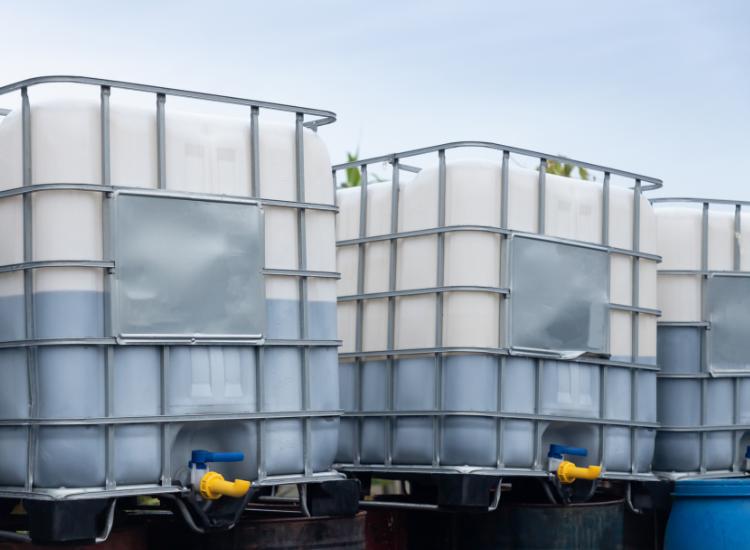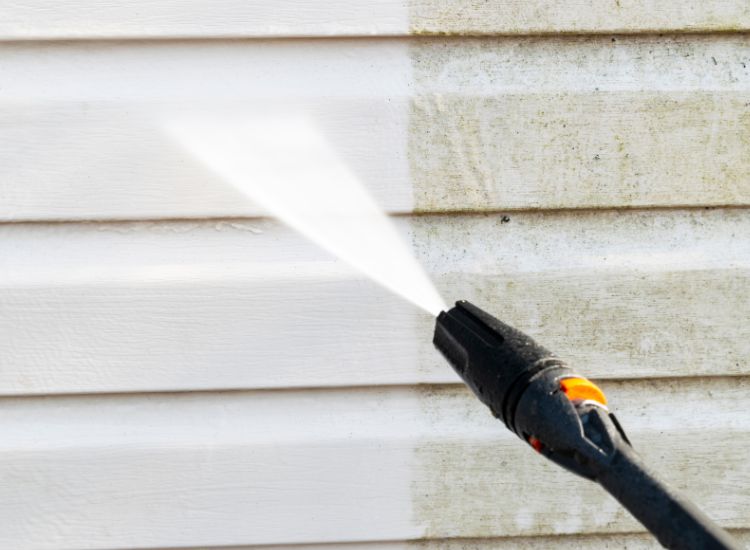What is a Buffer Tank in Pressure Washing?
Pressure washing can be very effective for cleaning a variety of surfaces, but maintaining the right pressure is key. That’s where a buffer tank comes into play – it helps ensure the smooth operation of your pressure washer by regulating water flow.
This brings us to the following question: what is a buffer tank in pressure washing?
A buffer tank stores water and provides it to your pressure washer on demand, preventing fluctuations in water pressure that could lead to poor cleaning results or damage. By using a buffer tank, you’ll enjoy steadier water delivery and a better overall pressure washing experience.
Buffer Tank Basics

Functions
A buffer tank serves as a storage container for water in pressure washing systems. It allows you to have a consistent water supply so that your pressure washer doesn’t run dry.
These tanks can hold a large volume of water, which is crucial when working on big projects.
Importance in Pressure Washing
Having a buffer tank in your pressure washing setup is essential for maintaining optimal performance. It ensures a steady flow of water to your pressure washer, preventing damage to the pump.
The tank also helps with water temperature regulation, keeping the pressure washer safe from overheating. Remember that a well-functioning system is key to helping you complete your tasks more efficiently.
Types of Buffer Tanks
Vertical
When you’re looking for buffer tanks in pressure washing, consider vertical tanks as a popular option. The main advantage of a vertical buffer tank is that it takes up less floor space, which is beneficial if you have limited room.
Also, they usually come with convenient features, such as molded-in tie-down slots and graduated gallon indicators.
Horizontal
On the other hand, horizontal buffer tanks are another great choice. These tanks are designed to sit on their side, allowing for easier access and maintenance. They can also distribute weight more evenly, reducing stress on your equipment.
Additionally, horizontal tanks often feature support structures like cradles or straps to keep them secure during transport or usage.
Choosing the Right Buffer Tank

Size Considerations
When selecting a buffer tank for your pressure washing setup, consider the size of your operation. For small-scale work, a 100-gallon tank may suffice. Larger jobs may require 500 or even 1,000-gallon tanks.
Ensure the tank’s size aligns with your pressure washer’s water flow rate. If the tank is too small, your washer could run dry, causing damage to it.
Material Options
Buffer tanks are available in various materials. Polyethylene is lightweight, affordable, and resistant to chemicals. Stainless steel tanks offer durability and may last longer, but they are also heavier and more expensive.
Consider your needs and budget when selecting the best material for your buffer tank.
Installation and Maintenance
Storage and Placement
When installing your buffer tank, choose a stable, level surface. This ensures proper functioning and safety. Secure the tank in your pressure washing vehicle, ensuring it doesn’t move during transit.
Routine Checkups
Perform regular inspections on your buffer tank. Check for leaks, cracks, or damage, and fix issues promptly. Monitor water levels and clean the tank as needed.
Observe hoses and fittings for wear, replacing them when necessary. Remember, proper maintenance prolongs the life of your buffer tank.
Environmental Benefits of Buffer Tanks
Water Conservation
Using a buffer tank in your pressure washing system can help you conserve water. For instance, you may experience a reduction in water waste, because the tank stores and recycles water during washing operations.
Chemical Use Reduction
Another advantage of buffer tanks is the potential to decrease the amount of chemicals used in pressure washing. By having a controlled system, you’re able to optimize the cleaning solution, which leads to less chemical consumption.
Frequently Asked Questions

How does a buffer tank work in pressure washing?
A buffer tank works by storing water from your water source, providing a continuous flow to your pressure washer. When your pressure washer needs water, it draws from the buffer tank, ensuring a steady supply.
Why is a buffer tank important for pressure washers?
A buffer tank is important because it helps prevent damage to your pressure washer’s pump. If the water supply is inconsistent, the pump can overheat and wear out quickly. Buffer tanks also improve cleaning efficiency by ensuring a steady water flow.
Which size of buffer tank is ideal for my pressure washer?
The ideal buffer tank size depends on your pressure washer’s flow rate (GPM) and your water source’s availability. Generally, a tank with 4-5 times your pressure washer’s GPM is a good starting point.
How do I set up a buffer tank with my pressure washer?
To set up a buffer tank, connect your water source to the tank’s inlet and your pressure washer to the tank’s outlet. Ensure there are no leaks and that your tank is large enough to accommodate your needs.
Do all pressure washers require a buffer tank?
Not all pressure washers require a buffer tank. It’s more common for commercial-grade pressure washers or in situations where water supply is inconsistent or limited. Smaller, residential pressure washers often don’t need a buffer tank.
Can I create a DIY buffer tank for my pressure washer?
Yes, you can create a DIY buffer tank using a large container, such as a water barrel or storage tote. You’ll also need the appropriate fittings, hoses, and connections to attach it to your water source and pressure washer securely.






